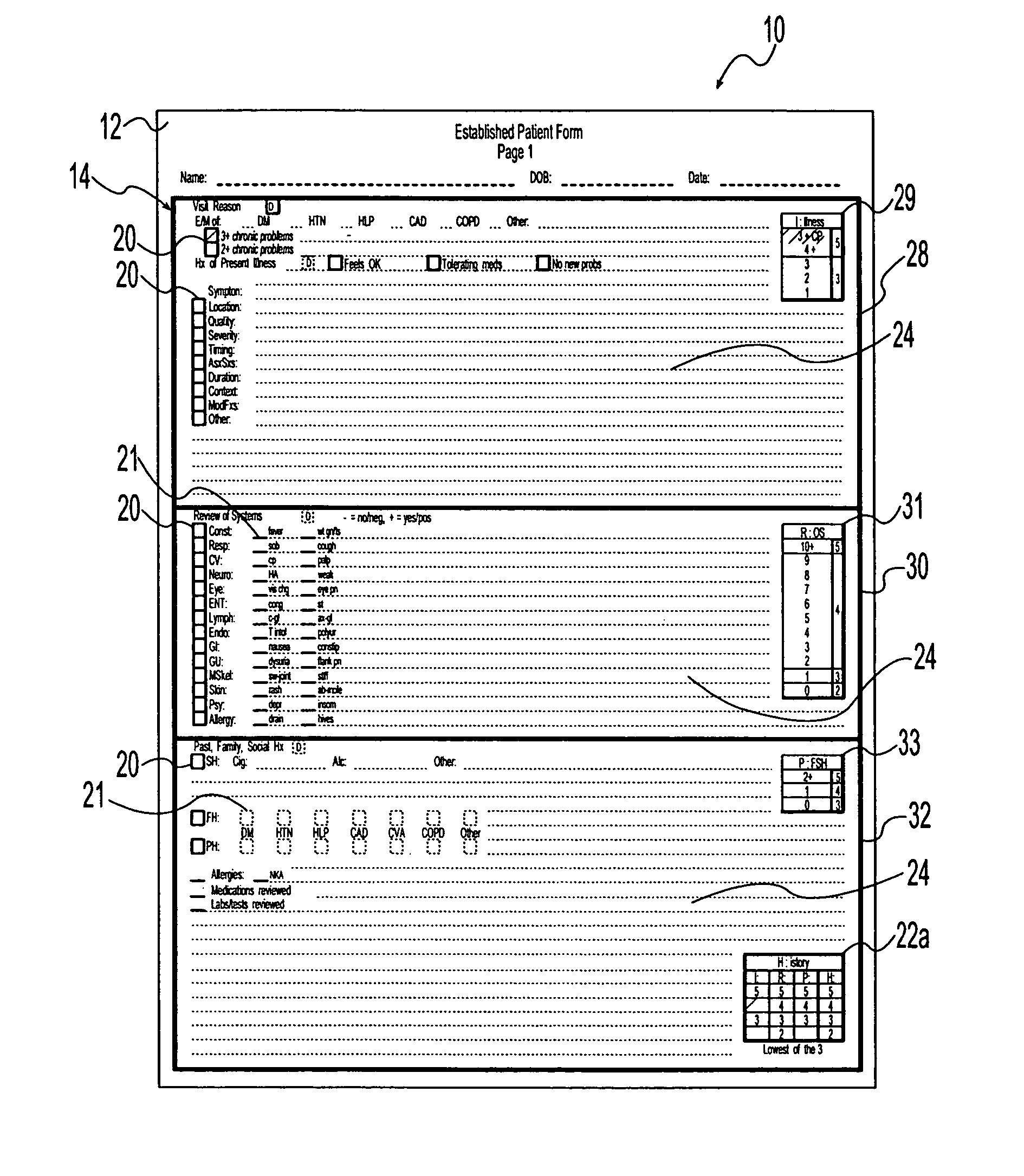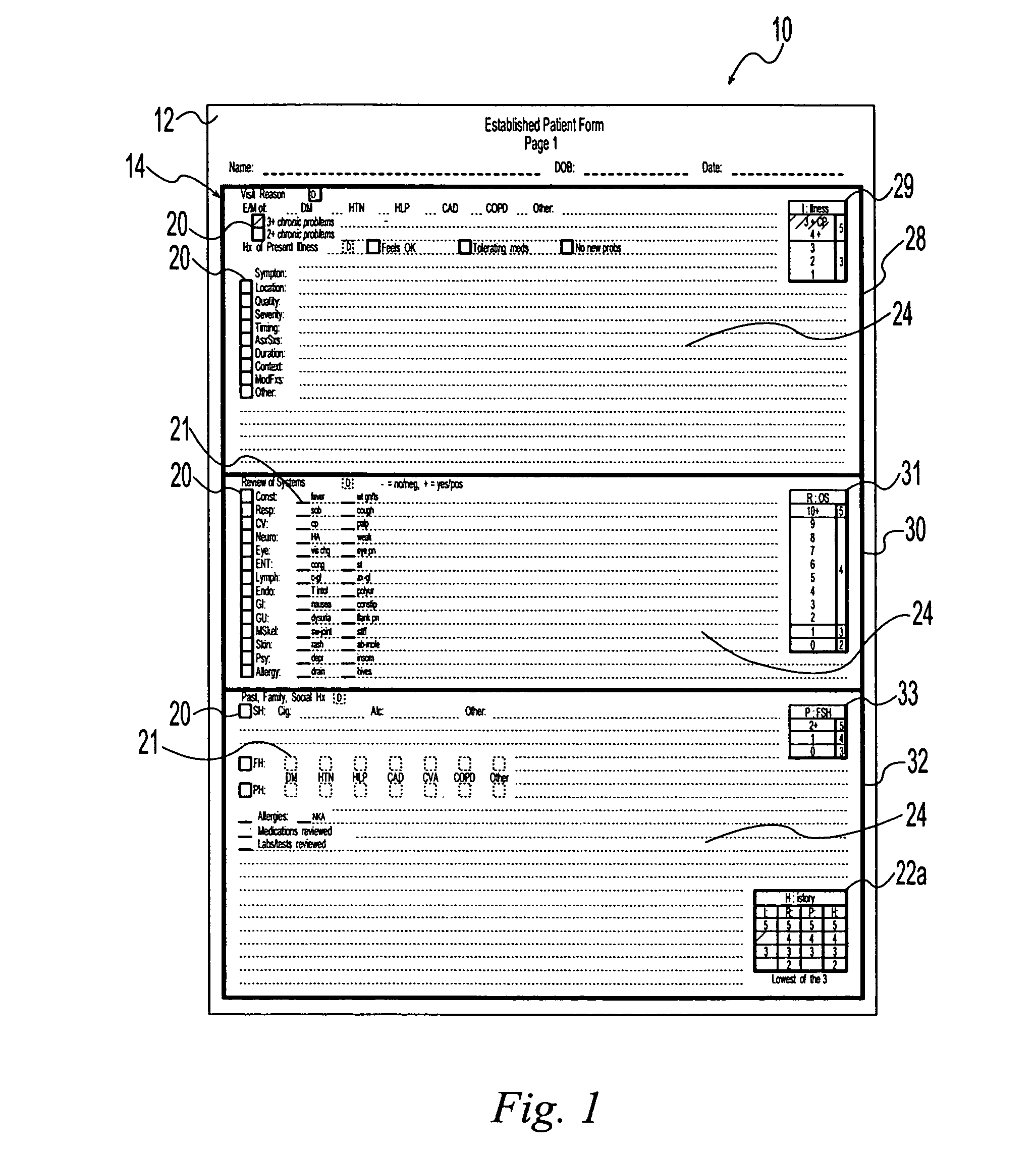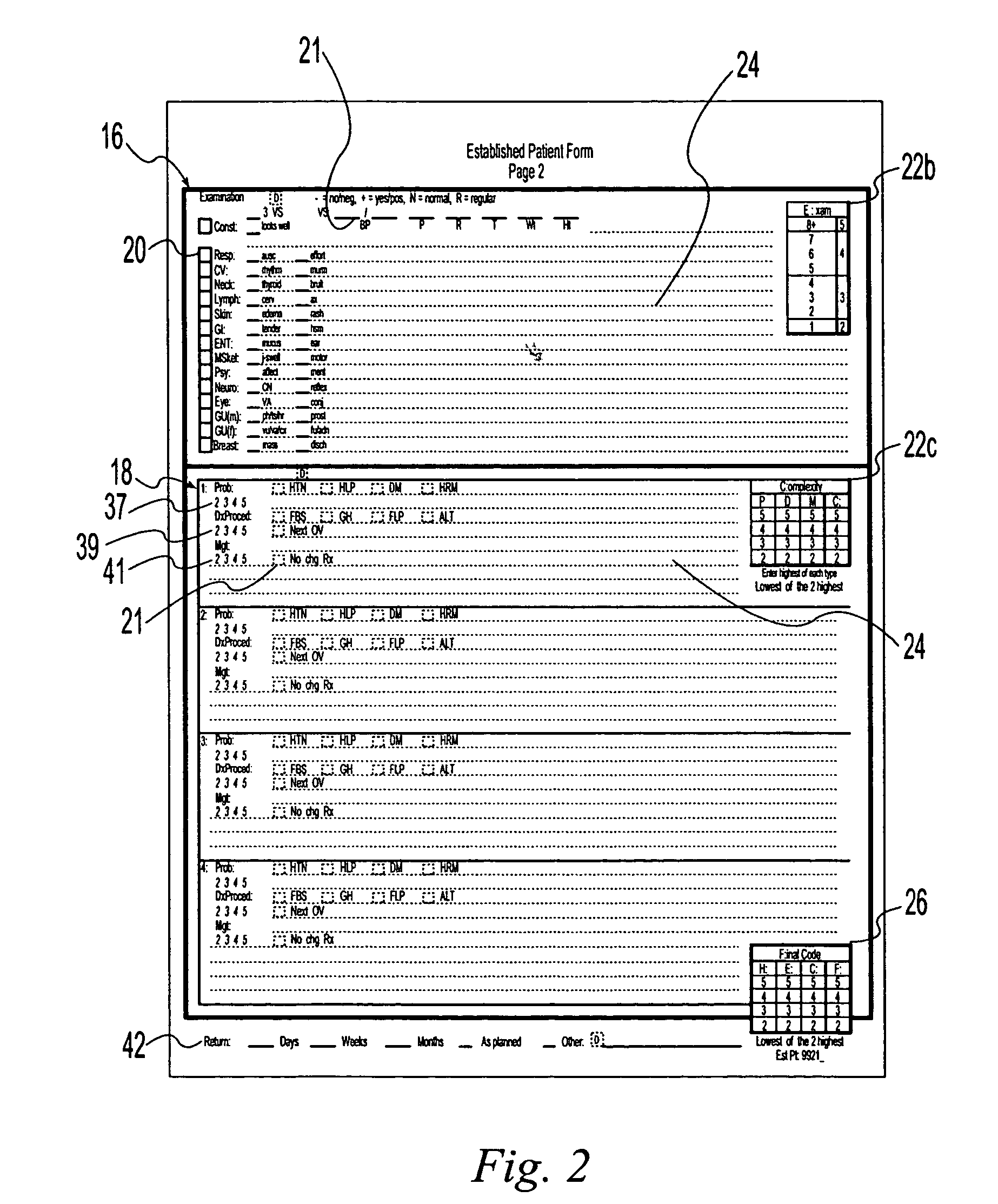System and method for determining CPT codes
a system and method technology, applied in the field of system and method for determining cpt codes, can solve the problems of slow patient flow, unintuitive coding guidelines, and the practical steps necessary to properly code and document health care encounters,
- Summary
- Abstract
- Description
- Claims
- Application Information
AI Technical Summary
Problems solved by technology
Method used
Image
Examples
example i
[0057] Referring now to FIGS. 8 and 9, an exemplary use of the form will now be described. The patient status in this example is an established patient and, therefore, the established patient form is selected. Turning to FIG. 8, the patient's demographic information, in this case the patient's name, date of birth, and date of visit, is recorded in the demographic section of the form. During the patient encounter, the caregiver determines that the patient, Jane Doe, has been experiencing moderate pain and discoloration in her left fourth toe for about two to three weeks. Accordingly, the appropriate point indicators relating to the evaluation of the toe pain symptoms are marked. More specifically, the caregiver records the location of the symptom as the left fourth toe and checks the point indicator relating to location. The caregiver also checks the point indicators relating to the severity, associated symptoms (AsxSxs) and duration, and records the severity of the pain as moderate,...
example ii
[0067] Referring now to FIGS. 10 and 11, another exemplary use of the present invention will be illustrated. In this example, John Doe has recently been transferred by his employer to the area and he needs to establish a new patient care relationship with a physician in the area. Because John Doe is a new patient, the New Patient Form is selected. As shown in FIG. 10, John Doe's name, date of birth and date of visit is entered in the patient demographic section of the New Patient Form. The physician or caregiver investigates John's present illnesses and determines that John Doe has diabetes mellitus (DM), hypertension (HTN) and hyperlipidemia (HLP). As a result, the caregiver checks the subindicators relating to “DM,”“HTN,”“HLP” and “Other.” Since John Doe has 3 or more chronic problems (i.e., DM, HTN, HLP), the point indicator indicating “3+” chronic problems is checked. Moving to the illness subsection score calculator, the “3+CP” is circled in the point tally column. The illness ...
PUM
 Login to View More
Login to View More Abstract
Description
Claims
Application Information
 Login to View More
Login to View More - R&D
- Intellectual Property
- Life Sciences
- Materials
- Tech Scout
- Unparalleled Data Quality
- Higher Quality Content
- 60% Fewer Hallucinations
Browse by: Latest US Patents, China's latest patents, Technical Efficacy Thesaurus, Application Domain, Technology Topic, Popular Technical Reports.
© 2025 PatSnap. All rights reserved.Legal|Privacy policy|Modern Slavery Act Transparency Statement|Sitemap|About US| Contact US: help@patsnap.com



